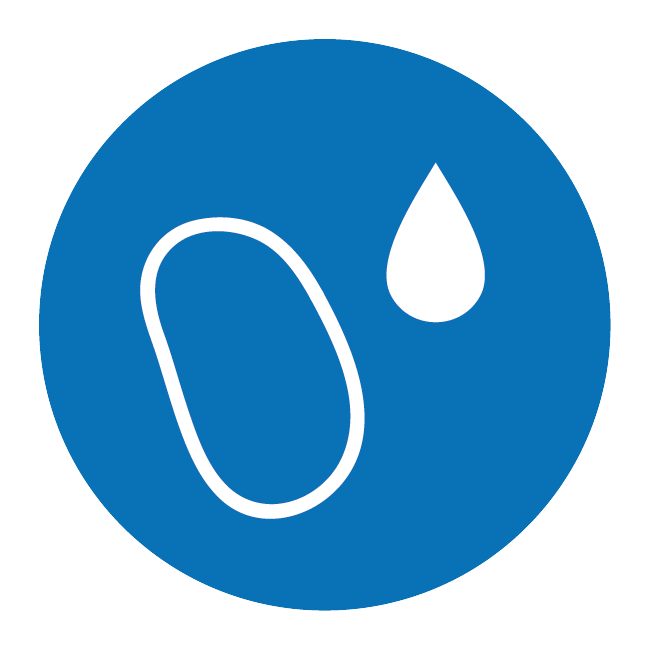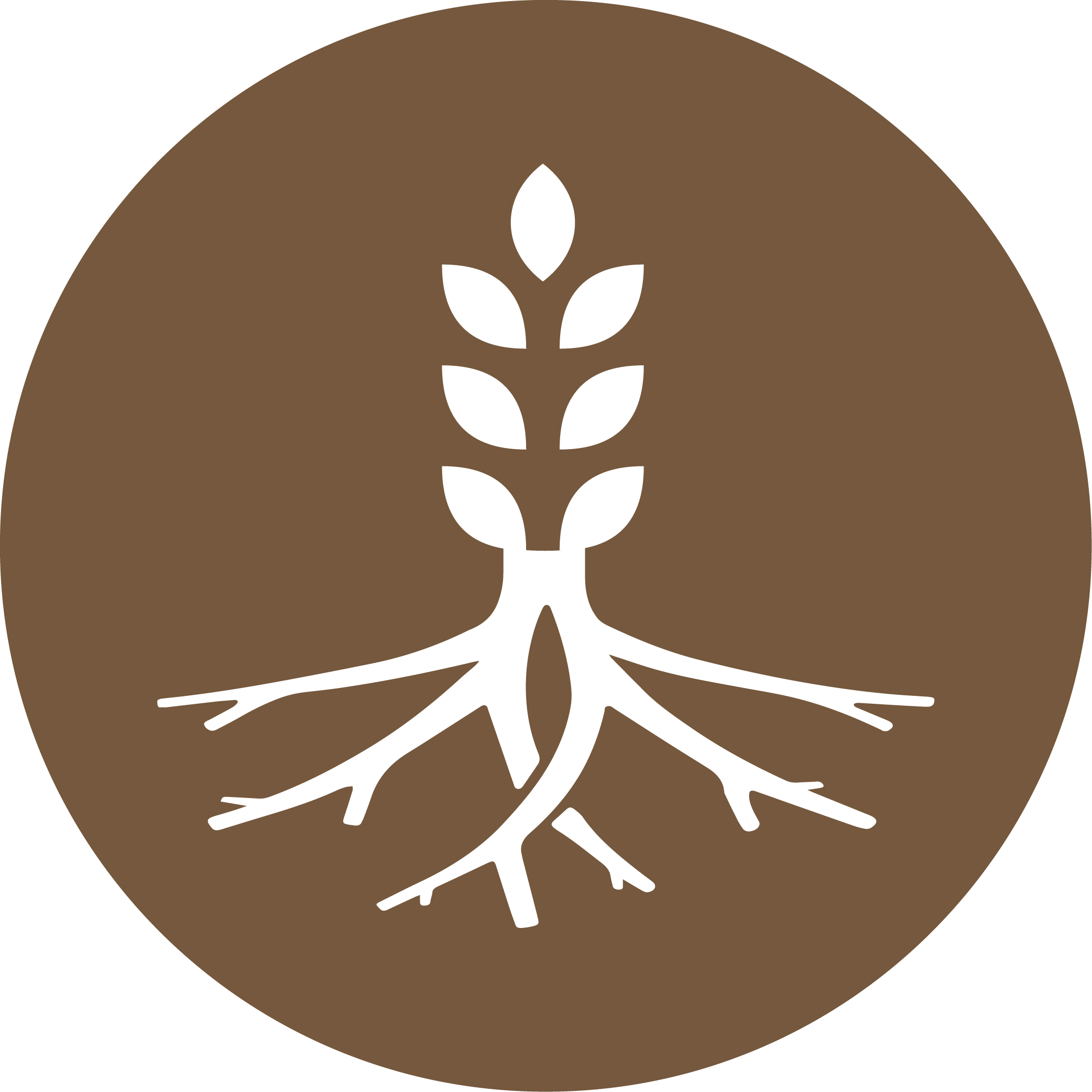Keep potato crops stress free with Bridgeway
Keeping potato crops stress free is not an easy job for growers, particularly when you consider the key growth periods of June through to August are also potentially some of the most stressful for the crop, with temperature and drought stress being particularly prevalent. However, early crop stress, which reduces the rate of carbon assimilation and decreases partitioning of assimilates to the tubers, is the most detrimental to tuberization, bulking and tuber yield and beating stress is therefore a necessary evil to protect yield.
With the potato tuber being mainly composed of photoassimilates, mostly starch, any mechanism to stimulate photosynthesis and translocation of the end product to the underground stem offers the possibility to increase tuber yield, and this is where biostimulant Bridgeway could be particularly useful. Bridgeway offers the possibility to reduce stress by improving root health and by increasing the rate of photosynthesis.
During 2017, 2018 and 2019, CMI Ltd investigated the effect of biostimulant Bridgeway in commercial potato crops for Nichino UK. The trials investigated the influence of different application timings and sequences of Bridgeway on the growth and yield of potatoes. In all trials, crops husbandry was even across the site and management aimed to remove all constraints other than those under investigation – all sites were irrigated with drip irrigation. Bridgeway was applied to the foliage of potatoes at a rate of 2 litres per hectare at each application timing investigated. Data from individual harvests were analysed by analysis of variance.
2017 – Effect of Bridgeway timing on yield
In 2017 the experiment was conducted in a commercial crop of cultivar Desiree planted on 9th May near Wilsford in Lincolnshire and applied at the application timings shown below.
Bridgeway application timings investigated
All treatments applied at 2 L/Ha

Test digs were made to assess speed of bulking and yield: 12th July, 1st August, 18th August, 31st August, 15th September and 4th October.
A stress period caused by hot weather occurred between 18th August and 31st August, which slowed tuber bulking, as can occur with a temporary stress, such as very hot or dry conditions. Bulking resumed after this period.
During phase one (ie up to 18th August), tubers in untreated plots bulked at a rate of 7.01 t/ha per week, and there was no statistical increase in bulking from treated plots. During phase two, all rates of tuber bulking were considerably lower than phase one, but were significantly higher in all Bridgeway treated plots than the untreated.
Tuber yield at final harvest was 61.32 t/ha in the untreated and there was a trend for yield to increase with later dates of Bridgeway application, with the differences being statistically significant from the onset of bulking and later. Bridgeway applied at the Cmax timing or plots which received three applications of Bridgeway achieved the highest yields with an additional 10.4 t/ha and 12.4 t/ha respectively. The greatest yield benefits from Bridgeway seemed to be related to recovery from the stress period, with the later applications of Bridgeway i.e. those closest in time to the stress period or multiple applications, having the biggest effect.
Early trials work with Bridgeway looked at various application timings and in a programme
2018 trials – Effect of Bridgeway timing and dose on yield
In 2018, work at CMI Ltd continued and consisted of two trials in a commercial crop of potatoes – one on Russet Burbank in Doncaster, and the other on King Edward in Lincolnshire.
Site 1 – Russet Burbank
The objective of the experiment was to look at the effect of early, late and early + late applications of Bridgeway on the potato crop. Early applications were made at the stolon hook stage, and late applications were made at the onset of tuber bulking (first tubers >10mm).
Early applications of Bridgeway were made on 6th June and late applications on 29th June. Test digs were again carried out: 21st June, 19th July, 3rd August, 16th August, 21st September, 2nd October.
The growing season was characterised by very hot conditions, particularly during late July and early August at this site. There was evidence that tuber bulking “paused” during this time, when temperatures were high enough to cause heat stress of potatoes. As there were only two harvests before this time there were insufficient data to calculate rates of tuber bulking by linear regression. By harvest 4 some significant effects of treatment were apparent, and by the final dig, all Bridgeway yields were higher than the untreated of 60.6 t/ha. Early and early + late treatments delivered statistically significant higher yields at 68.5 t/ha and 67.9 t/ha respectively. Margin over input costs were also significant at over £1,000/ha additional margin for these treatments.
Site 2 – King Edward
The trial objective was to investigate the effect of late season applications of Bridgeway on the potato crop and treatments were applied as follows:
- 2 weeks before Cmax – 7th August
- 1 week before Cmax – 14th August
- Cmax – 4th September
- 1 week after Cmax – 19th September
- 2 weeks after Cmax – 25th September
High temperatures in July coincided with early stages of tuber formation and growth in this late planted crop. In an unstressed potato crop tubers generally form and begin to grow within a relatively short time but heat stress in this crop appeared to result in two phases of tuber formation, with the result that the linear phase of tuber bulking did not begin until after Harvest 1. At Harvests 3 and 4 there were significant effects of treatment on tuber yield, with a trend for higher yields in plots of treatments including the earlier applications. This resulted in a trend for higher rates of bulking in treated than in untreated plots but the difference was significant for only treatment -2 & -1 & Cmax. Yield in untreated plots was 29.74 t/ha and the highest yield occurred in plots of treatment -2 & -1 & Cmax, where the yield was 34.81 t/ha.
Final yield was recalculated in relation to the total number of applications of Bridgeway and showed significant increases in yield as the number of applications increased from nil to two. The trial demonstrated that all Bridgeway treatments had significant effects on the potato crop and additional margin over input cost.
2018 trials - Bridgeway increased yield and margins significantly. Two to three applications optimal
2019 trials – Effect of Bridgeway dose on yield
In 2019 trials were conducted to look at the effect of total Bridgeway dose on the potato crop.
Timings of treatments applied:
- Ob – Onset of tuber bulking (first tubers >10mm) – 5th July
- 2 weeks post Ob – 17th July
- 4 weeks post Ob – 31st July
Test digs were made on: 3rd July, 17th July, 30th July, 27th August, 6th September and 25th September.
Stress occurred during the early part of the season. Significant differences in tuber yield occurred from harvest 3 onwards and there was a trend for increasing yield with increasing number of Bridgeway applications. Whilst the untreated gave a yield of 32.9 t/ha, 2 and 3 applications of Bridgeway gave a statistically significant yield increase of +4.1 t/ha & +5.2 t/ha respectively, and a very healthy margin over input cost of +£698/ha with 2 applications and +£850/ha with 3 applications.
2019 trials – Bridgeway increased yield and margins significantly. Three applications optimal
Effect of Bridgeway on tuber yield (t/ha) and margin over input cost (£)
All Bridgeway treatments applied at 2.0 L/Ha

CMI 2019, Wilsford. Potatoes cv Sapphire. P = 0.002. Harvested 6th September. SD = Significant difference. Potatoes at £175/t MOIC based on Bridgeway £10/L
Conclusions – 3 years of trials
- In 2017, 2018 and 2019 visual observations were no indicator of what was happening below ground
- In 2017, 2018 and 2019 yields with Bridgeway were increased significantly
- Bridgeway helped potato crops cope better with stress
- Stress occurred at some point during the trial period in 2017, 2018 and 2019 and Bridgeway applications closest to the stress period had the biggest impact on yield
- Programme approach optimal in 2017, 2018 and 2019 with 2 or 3 applications delivering the maximum response
How to use Bridgeway
For information on recommended timings in potatoes and how to use, please request a copy of our product guide on the Bridgeway product page and we’ll get a copy right over to you.















